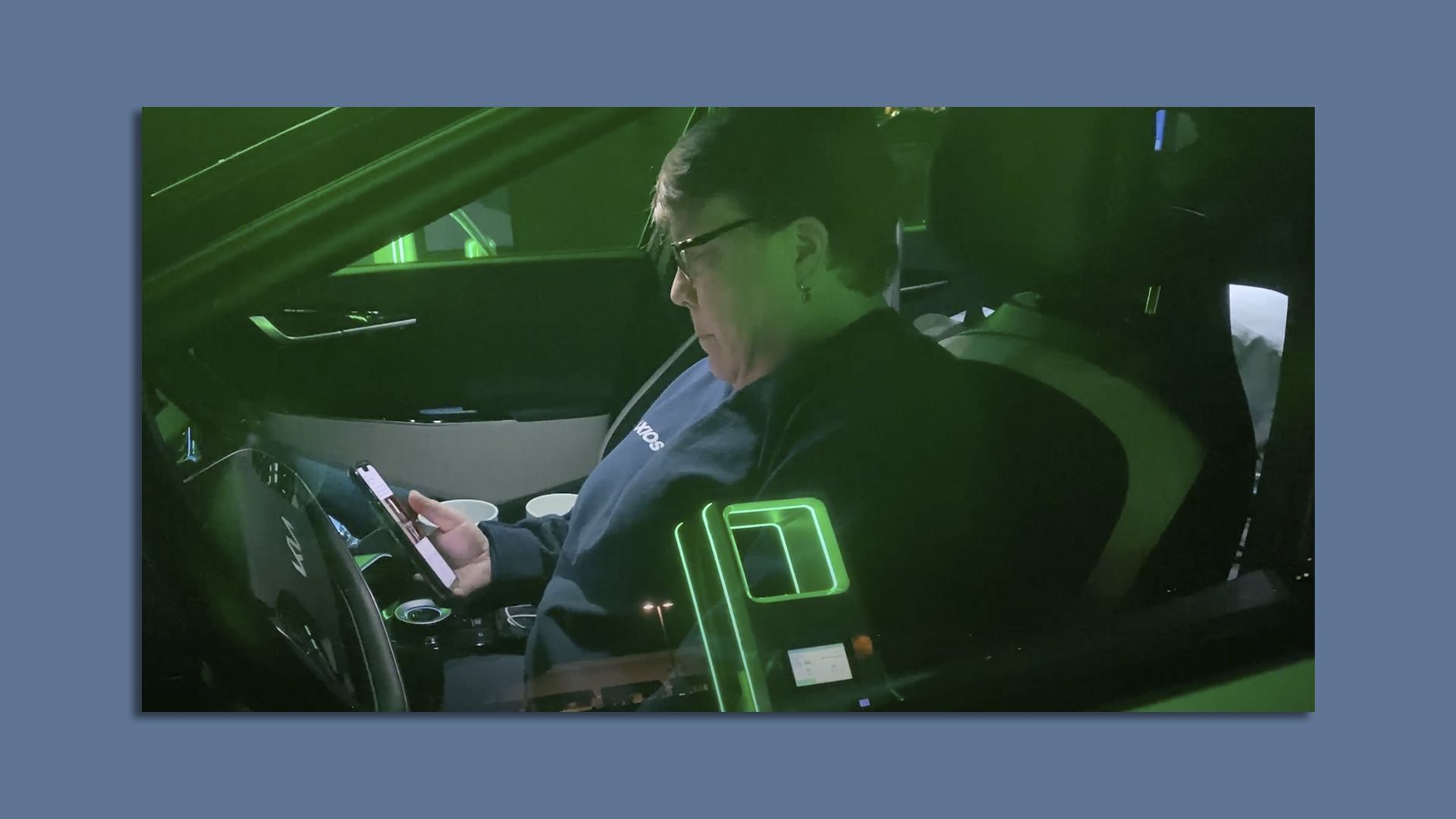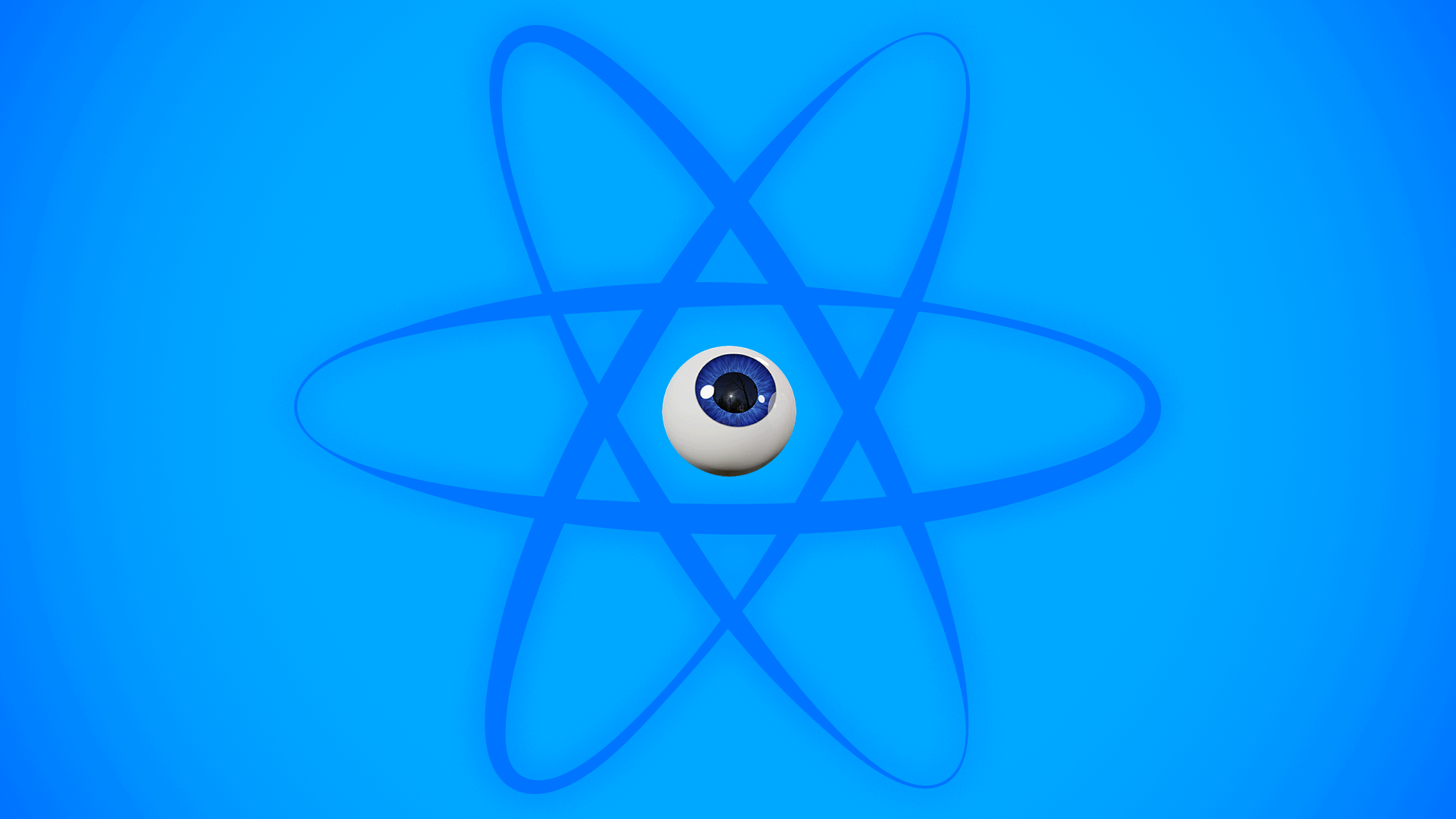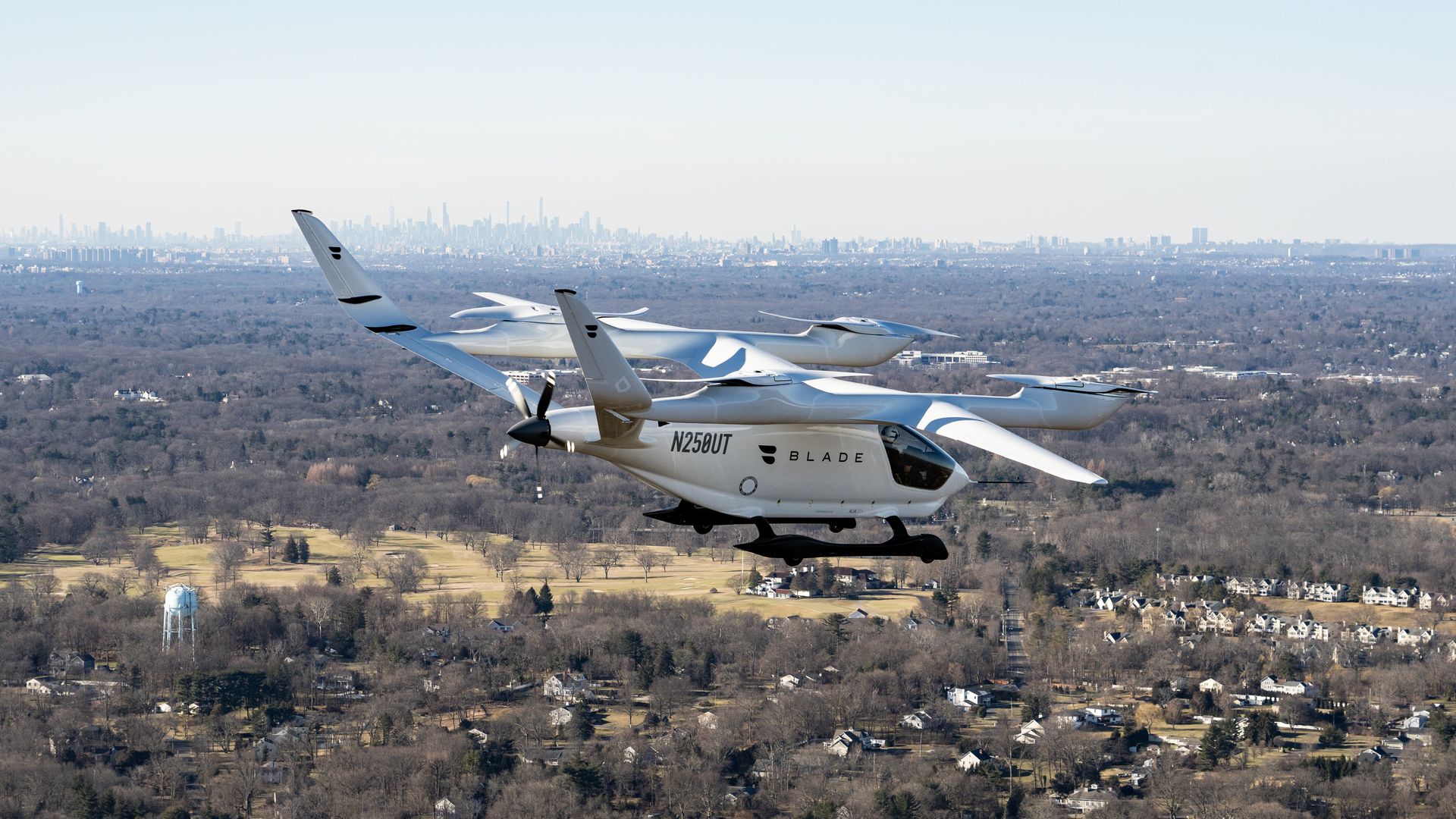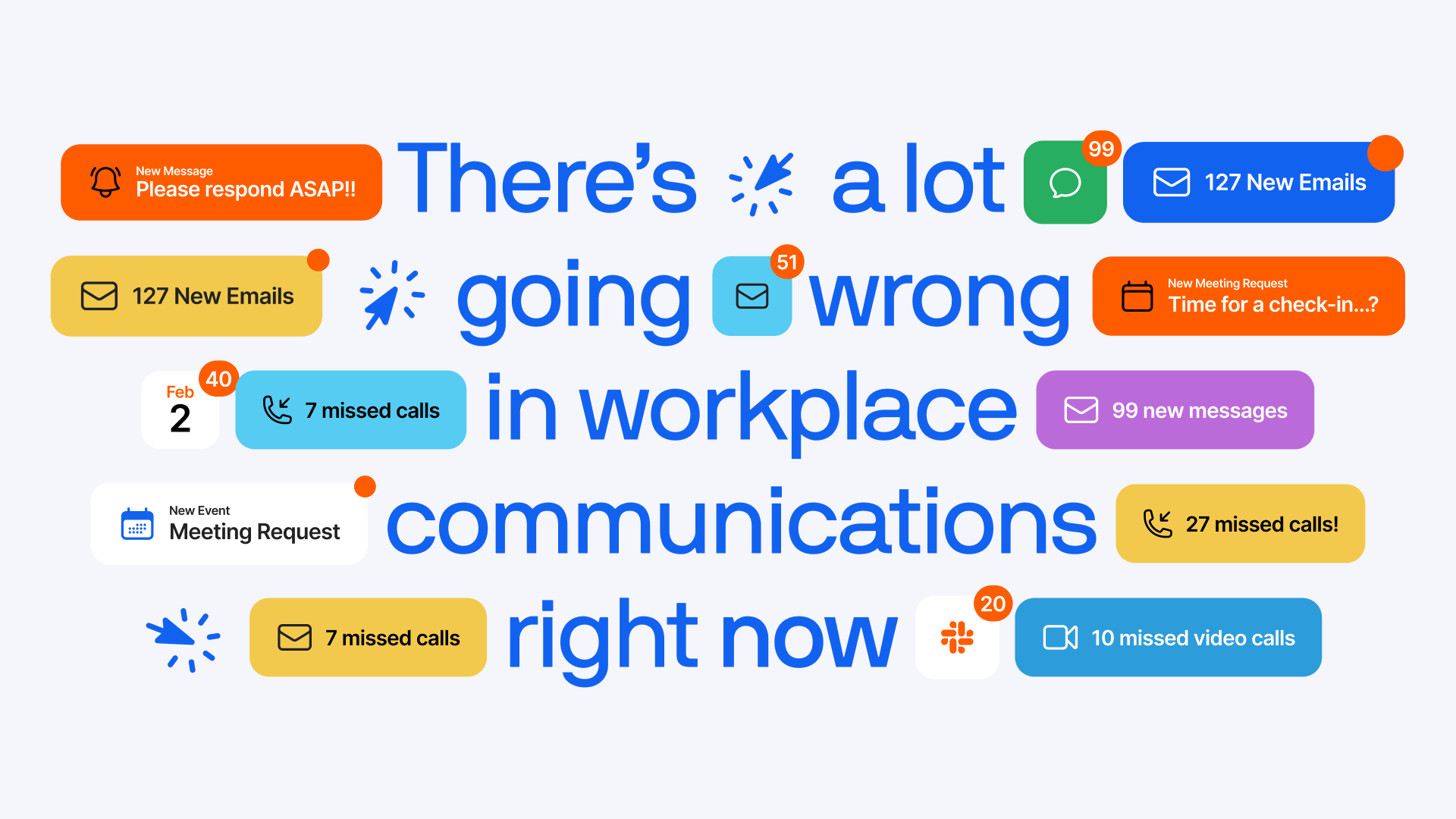| | | | | | | | | | | Axios What's Next | | By Joann Muller, Jennifer A. Kingson and Alex Fitzpatrick · Feb 21, 2023 | | Joann learned a ton from her big EV road trip down to Florida — and if you're considering going electric, she's got some tips to share. Today's newsletter is 1,070 words ... 4 minutes. | | | | | | 1 big thing: 7 key EV road trip lessons |  | | | Charging at night at Electrify America north of Charleston, S.C. Photo: Bill Rapai | | | | My recent 1,500-mile road trip in an electric car taught me some valuable lessons, Joann Muller writes: How to get over our initial range anxiety, for example, and how to find the best charging spots. - It also demanded a change in attitude. You're going to be disappointed; just accept it and plan accordingly.
Here's what we learned... Chargers aren't where you expect them. Only two of the chargers we came across were located at traditional highway rest stops. More often than not, they're in the parking lot of a Walmart, shopping mall or tourist trap. - Most EVs will show you charging stations on the car's navigation system. A few, like those from Tesla and Mercedes, will even advise when you should charge along your planned route.
- We used route-planning apps like PlugShare, A Better Route Planner and Chargeway.
- There are no signs along the highway for EV charging stations — but there should be.
Don't expect lots of amenities near chargers. You can usually walk to a bathroom or restaurant, but there are no trash bins or other conveniences nearby. - Nor is there cover from the elements, as we discovered one rainy day. You can sit in the car while it charges, but you're already wet from futzing with the charger.
Safety could be a concern. The chargers are lit up at night, but not enough to make you feel secure. I sat in the car and locked the doors while charging after dark. - There was a security camera mounted on a pole at one charging spot in a Target parking lot, but the light on top of the pole was out.
- At another station, in a Walmart lot, I felt uneasy with three or four idling semi-trucks nearby.
Not all "fast" chargers are the same. A bank of chargers typically offers an array of power levels, ranging from 50 kW to 350 kW. If you know how fast your car can accept electricity, you should select the appropriate charger. - Beggars can't be choosers, though, and sometimes you take whatever charger is available.
Fast-charging is slower than expected. We charged mostly at Electrify America or EVGo fast-chargers, and always sought out the fastest plug available (usually 350 kW) because Kia's 800-volt EV6 is capable of gulping power faster than most other cars. - Even so, the charging speed would ramp up to a maximum of around 200 kW, and then slow down.
- After 80%, charging always slows down to a trickle in any EV — just like a gas pump slows when the tank is almost full.
- Our fastest time to charge from 20% to 80% was about 20 minutes at a 350-kW charger. Our slowest: 55 minutes at a 50-kW charger.
Charging away from home is expensive. Electricity at home costs a national average of 16 cents per kilowatt-hour. On the road, we paid anywhere from 30 cents to 43 cents. - Total cost for charging was around $162, and added a total of about 4 hours to our trip.
- The same trip would have cost about $184 in a gasoline-powered Kia Sportage SUV, which gets 28 miles per gallon on the highway.
You meet the nicest people while charging. Everyone is eager to compare notes, share tips and check out each other's ride. What to watch: Charging convenience is set to improve, in part because the federal government is putting $7.5 billion behind a national charger network. - Tesla, whose Superchargers can be found pretty much coast-to-coast, plans to double the size of its network and make some chargers available to drivers of other brands.
- Other players, such as Electrify America, EVGo and ChargePoint, are beefing up their networks too.
Share this story. |     | | | | | | 2. Spycraft goes quantum |  | | | Illustration: Aïda Amer/Axios | | | | Quantum sensing devices able to collect ultra-precise data could define 21st century warfare and intelligence gathering, Axios' Alison Snyder reports. Why it matters: Quantum computing usually gets the attention (and most of the funding). - But quantum sensors — which can measure minute changes in the environment, such as subtle shifts in gravitational fields — are advancing quickly, and are expected to be deployed sooner.
What's happening: Quantum sensors are being developed for a range of applications, including navigation, smart building monitoring, oil prospecting and intelligence gathering. - The U.S. Air Force recently awarded quantum startup SandboxAQ a contract to develop its quantum navigation technology, which the company says could complement GPS.
- Other companies — including Rafael Advanced Defense Systems in Israel and Q-CTRL in Australia — as well as NATO, the U.S., China and other militaries are also developing quantum sensing devices.
What's next: The data generated by quantum sensors could fuel the development of quantum computing by offering such systems information that's already in quantum form, experts say. Read the rest. |     | | | | | | 3. 📸 Blade's NYC eVTOL test |  | | | Beta Technologies' Blade-branded eVTOL flies just outside New York City. Photo courtesy of Blade Air Mobility, Inc. | | | | Urban air mobility company Blade and aerospace startup Beta Technologies successfully tested a Beta electric vertical takeoff and landing (eVTOL) aircraft near New York City, the companies recently announced, Alex Fitzpatrick reports. - The prototype aircraft, called the Alia-250, flew into and out of Westchester County Airport in White Plains, New York, about 30 miles north of Manhattan.
Blade hopes to use eVTOLs in part to shuttle passengers to and from downtown areas to nearby airports. (In New York, it's currently offering traditional helicopter service between Manhattan heliports and JFK and Newark airports, for example.) - eVTOLs promise to be quieter and cleaner to operate than standard helicopters.
What they're saying: eVTOLs "will be a game-changer both for our company and New York City's transportation system once certified by the FAA," Blade CEO Rob Wiesenthal said in a statement. Yes, but: The aircraft didn't enter the particularly busy and complex airspace immediately over and around New York City. |     | | | | | | A message from Axios | | The 2023 state of essential workplace communications | | |  | | | | Over 70% of leaders say essential comms at their org are relevant and engaging. - Almost half of employees disagree.
On Thursday at 12:30, Axios HQ's head of content will dive deep into more data around the state of essential workplace communications and share the strategies that can help bridge this gap. Join the conversation | | | | | | 4. One fun thing: Marvel's next era |  | | | A still from "Ant-Man: Quantumania." Photo: Disney, Marvel Studios | | | | The next phase of the Avengers' story began this weekend with "Ant-Man and the Wasp: Quantumania," Axios' Herb Scribner writes. The big picture: The newest Marvel movie is expected to establish a new narrative path that fans have been itching for, all leading up to "Avengers: The Kang Dynasty" in 2025 and "Avengers: Secret Wars" in 2026. - "Quantumania" is the first film of Marvel's "phase five," which is a part of the ongoing "Multiverse Saga."
State of play: Critics and fans haven't been loving the Marvel universe's vibe since 2019's "Avengers: Endgame." - Much of the concern stems from projects — such as "Eternals" and "Thor: Love and Thunder" — feeling disconnected and separated from each other.
- More recent Marvel projects have been focused on introducing new heroes — like Moon Knight, She-Hulk and Ms. Marvel — instead of bringing familiar ones together.
Yes, but: So far, "Quantumania" has been panned by critics, who have called it straight up "bad" and "forgettable." Read the rest. |     | | | | | | A message from Axios | | The 2023 state of essential workplace communications | | |  | | | | Over 70% of leaders say essential comms at their org are relevant and engaging. - Almost half of employees disagree.
On Thursday at 12:30, Axios HQ's head of content will dive deep into more data around the state of essential workplace communications and share the strategies that can help bridge this gap. Join the conversation | | | | Big thanks to What's Next copy editor Amy Stern. Was this email forwarded to you? Get your daily dose of What's Next by signing up here for our free newsletter. |  | | Are you a fan of this email format? Your essential communications — to staff, clients and other stakeholders — can have the same style. Axios HQ, a powerful platform, will help you do it. | | | | | | Axios thanks our partners for supporting our newsletters.
Sponsorship has no influence on editorial content. Axios, 3100 Clarendon Blvd, Arlington VA 22201 | | | You received this email because you signed up for newsletters from Axios.
To stop receiving this newsletter, unsubscribe or manage your email preferences. | | | Was this email forwarded to you?
Sign up now to get Axios in your inbox. | | | | Follow Axios on social media:    | | | | | |









No comments:
Post a Comment